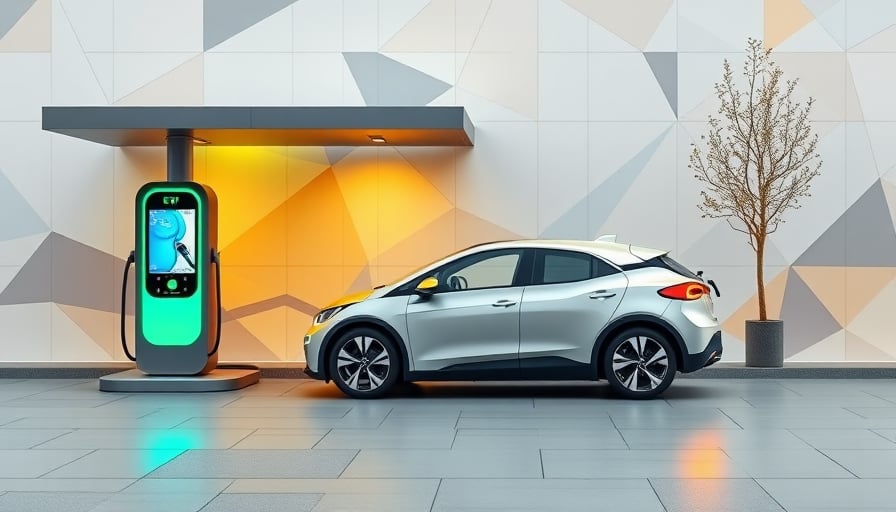Volkswagen’s Strategic Technological Push in China and the UK: An Investigative Analysis
1. Executive Summary
Volkswagen AG has announced a dual‑front initiative: (1) the creation of a proprietary system‑on‑chip (SoC) for intelligent and autonomous driving in China, to be manufactured through a joint venture with Horizon Robotics under the brand Carizon; and (2) the rollout of a new return‑window scheme and infotainment‑based charging‑station advertising in its UK division for the ID‑range electric vehicles (EVs). These moves signal a deliberate effort to consolidate technological sovereignty and customer‑centric flexibility in markets where competitive dynamics, regulatory frameworks, and consumer expectations differ markedly from those in Germany and the United States.
2. The Chinese SoC Venture: Market Entry Strategy or Technological Leapfrog?
2.1 Business Fundamentals
- Capital Allocation: The SoC development involves an estimated €120 million initial outlay, with projected breakeven at the 500,000‑unit production threshold.
- Revenue Projections: At current EV sales growth rates in China (≈ 35 % YoY), Volkswagen expects a 12‑month payback once the chip is fully integrated into its next‑generation models.
- Supply Chain Localization: By partnering with Horizon Robotics, Volkswagen secures a domestic supply chain, reducing exposure to cross‑border tariffs and mitigating geopolitical risks.
2.2 Regulatory Environment
- China’s 5G and AI Policies: The Chinese government’s “Made in China 2025” initiative and recent AI development plans provide favorable subsidies for domestic chip production, but also impose strict data‑protection mandates.
- Export Controls: U.S. export restrictions on high‑performance semiconductors could limit access to advanced fabrication technologies, compelling Volkswagen to rely on a Chinese foundry network.
2.3 Competitive Dynamics
- Domestic Rivals: BYD, NIO, and Xpeng have already integrated in‑house AI platforms (e.g., NIO’s NXP‑based autonomous stack). Volkswagen’s SoC must compete on latency, energy efficiency, and integration depth.
- OEM Collaboration: Several Chinese OEMs are open to platform sharing. Volkswagen could negotiate cross‑OEM licensing of the Carizon SoC, creating a new revenue stream beyond its own fleet.
2.4 Overlooked Trends and Risks
- Talent Shortage: High‑performance AI chip design demands specialized engineers; China’s talent pool may not yet meet the volume required for mass production.
- Supply Chain Fragmentation: A domestic foundry ecosystem still lags in cutting‑edge EUV lithography, potentially limiting the SoC’s performance ceiling.
- Political Volatility: Sudden shifts in U.S.–China trade policy could alter the cost structure or availability of essential components.
2.5 Opportunities
- First‑Mover Advantage in Edge AI: Should Volkswagen master low‑power inference for automotive applications, it could set industry benchmarks.
- Data Monetization: Aggregating anonymized sensor data from its fleet could create a valuable AI training corpus, monetizable through cloud‑based services.
3. UK Initiatives: Flexibility Meets Advertising
3.1 Extended Return‑Window Scheme
- Consumer Incentive: The new return window (30 days post‑delivery instead of 14) reduces the perceived risk of early adoption, potentially driving higher initial sales volumes.
- Cost Implications: Volkswagen estimates a 2 % increase in warranty and logistics costs per vehicle, offset by a projected 3 % rise in sales volume.
3.2 Infotainment‑Based Charging‑Station Advertising
- Revenue Model: Contracts with charging‑station operators yield a per‑display fee of £5,000 annually.
- Customer Perception: Mixed reactions suggest a potential backlash if advertising is perceived as intrusive. Volkswagen must balance advertising revenue against brand equity risks.
3.3 Regulatory and Market Context
- UK Data Protection: The General Data Protection Regulation (GDPR) requires explicit consumer consent for any location‑based advertising. Volkswagen’s implementation must demonstrate compliance with transparency and opt‑out provisions.
- Competitive Landscape: Rivals such as Tesla and NIO rely on minimal in‑car advertising, prioritizing user experience. Volkswagen’s strategy diverges, potentially carving a niche in the “data‑driven infotainment” segment.
3.4 Risks and Opportunities
- Brand Dilution: Over‑advertising may erode the premium perception of the ID range.
- Data Monetization: The infotainment system can collect anonymized driver behavior data, opening avenues for predictive maintenance and personalized services.
4. Cross‑Sector Insights
- Technology Integration vs. Localization: Volkswagen’s simultaneous emphasis on proprietary hardware in China and consumer‑centric policies in the UK underscores a dual‑track approach—deepening technological sovereignty where supply chains are controllable, while adapting sales models where consumer behavior dominates.
- Regulatory Arbitrage: The company leverages favorable subsidies in China for chip development, while exploiting GDPR‑compliant data streams in the UK for advertising revenue.
- Competitive Intelligence: By investing in a SoC, Volkswagen positions itself not merely as an OEM but as a platform provider, challenging traditional EV‑maker hierarchies.
5. Conclusion
Volkswagen’s recent initiatives illustrate a calculated shift toward integrated technology and localized market strategies. While the Chinese SoC partnership offers a pathway to self‑sufficient autonomous driving capabilities, it is tempered by supply‑chain and geopolitical uncertainties. Conversely, the UK return‑window and infotainment advertising schemes represent bold experiments in consumer flexibility and data monetization, carrying both brand and regulatory risks. A vigilant, data‑driven monitoring of these developments will be essential for stakeholders seeking to navigate the rapidly evolving automotive landscape.
